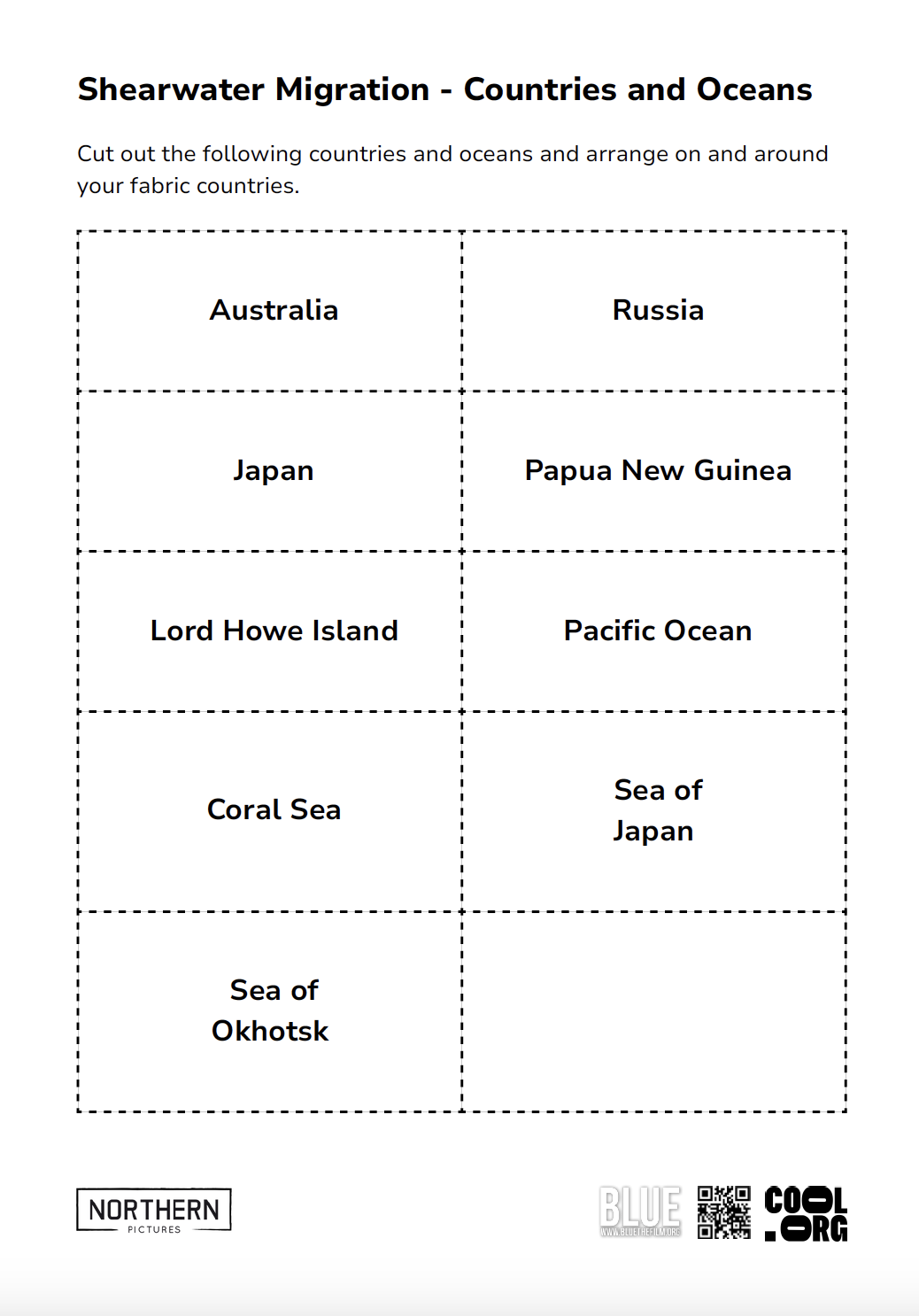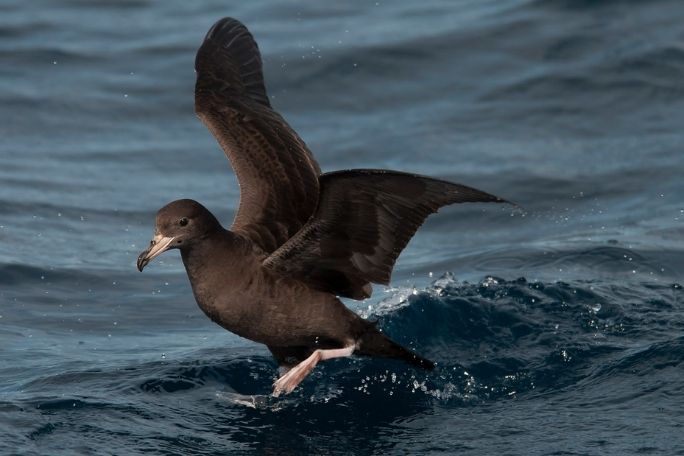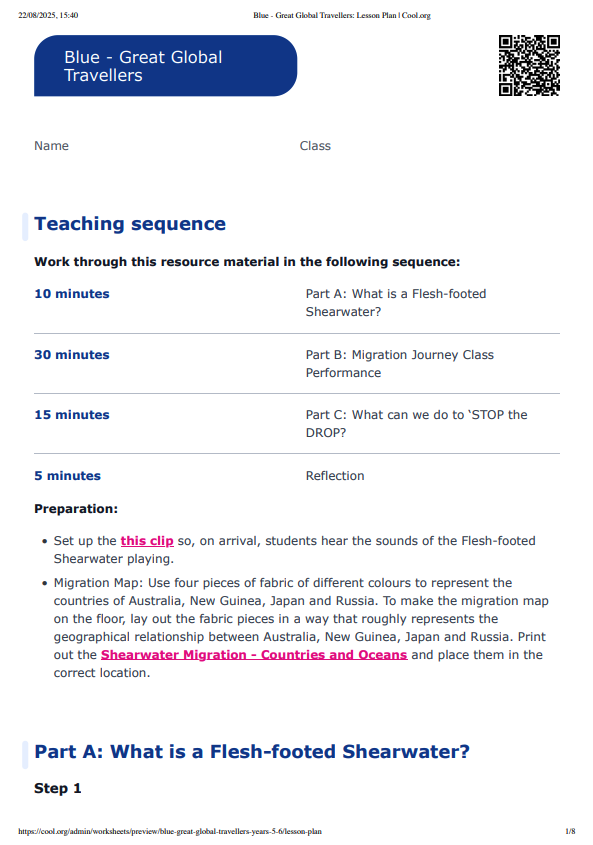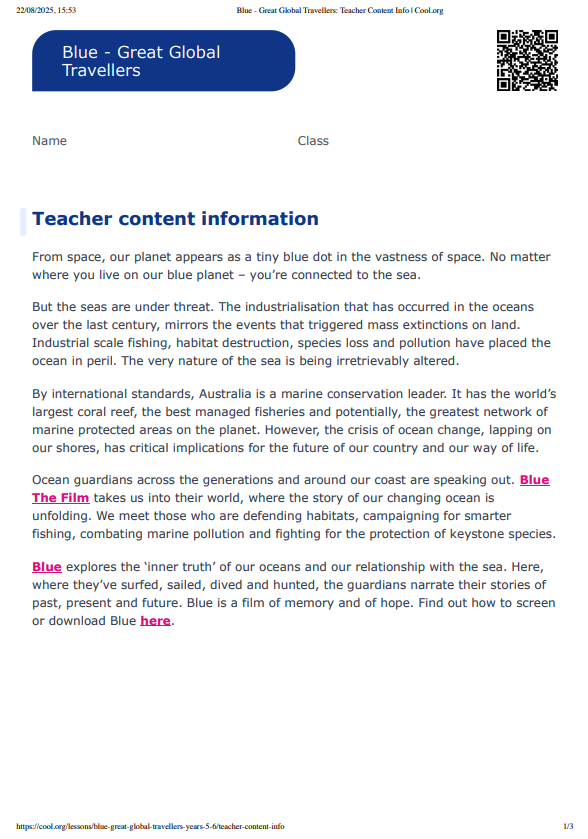Lesson summary
This lesson incorporates clips from Blue The Film as learning inspiration. In this lesson students explore the global migration journey of the Flesh-footed Shearwater. Students begin the lesson by looking at the physical features of shearwaters and, in particular, the features that allow them to navigate the open ocean and return home again. They then take part in an interactive role play following the migration route of the shearwater. Finally, students consider how humans impact the oceans through plastic pollution and consider ways to share their own ‘STOP the DROP’ litter message with the school or local community.
Learning intentions:
Students will...
- recognise the physical features of a shearwater.
- understand how and why shearwaters take long migration journeys.
Success criteria:
Students can...
- identify one to three biological features of a shearwater that help it on its migration journey
- understand how shearwaters navigate the oceans
- identify how plastics are harming shearwaters
- identify how to help shearwaters
- participate in a role play activity
- contribute to class and group discussions.
Lesson guides and printables

Curriculum links
Select your curriculum from the options below.
Lesson details
Skills
This lesson is designed to build students’ competencies in the following skills:
- communication
- creativity
- critical thinking
Curriculum Mapping
Australian Curriculum content descriptions:
Year 5 Science:
- Living things have structural features and adaptations that help them to survive in their environment (ACSSU043)
Year 6 Science:
- The growth and survival of living things are affected by physical conditions of their environment (ACSSU094)
Syllabus outcomes: ST3-10LW, ST3-11LW.
General capabilities: Critical and Creative Thinking
Cross-curriculum priority: Sustainability
Relevant parts of Year 5 Science achievement standards: Students analyse how the form of living things enables them to function in their environments.
Relevant parts of Year 6 Science achievement standards: Students describe and predict the effect of environmental changes on individual living things.
Unit of work: Blue The Film: Inquiry – Years 5 & 6.
Time required: 60 mins.
Level of teacher scaffolding: Medium – lead students in role-play activity and discussions.
UN Sustainable Development Goals
- Target 14.1: By 2025, prevent and significantly reduce marine pollution of all kinds, in particular from land-based activities, including marine debris and nutrient pollution.
Resources Required
- Student Worksheet – one copy per student
- Device capable of presenting a website to the class
- Large world map
- Four fabric pieces (different colours) to represent the countries of Australia, New Guinea, Japan and Russia
- Shearwater Migration – Countries and Oceans
- Flesh-footed Shearwater Picture
- Shearwater Chick Picture
- Shearwater Migration Journey – Script
- Art materials or camera
Additional Info
Blue is a feature documentary film charting the drastic decline in the health of our oceans. With more than half of all marine life lost and the expansion of the industrialization of the seas, the film sets out the challenges we are facing and the opportunities for positive change. Blue changes the way we think about our liquid world and inspires the audience to action. Find out how to screen or download the film here. Along with the film is an ambitious global campaign to create advocacy and behaviour change through the #oceanguardian movement. To become an ocean guardian, see the website.
Related Professional Learning
How To Teach Sustainability With Hope
Quick summary: This course is for both primary and secondary teachers of all subjects, but especially for English, Science, Humanities and Geography teachers who are covering climate change and the cross-curriculum priority of sustainability.




Welcome back!
Don't have an account yet?
Log in with:
Create your free Cool.org account.
Many of our resources are free, with an option to upgrade to Cool+ for premium content.
Already have an account?
Sign up with:
By signing up you accept Cool.org's Terms and Conditions(Opens in new tab) and Privacy Policy(Opens in new tab).